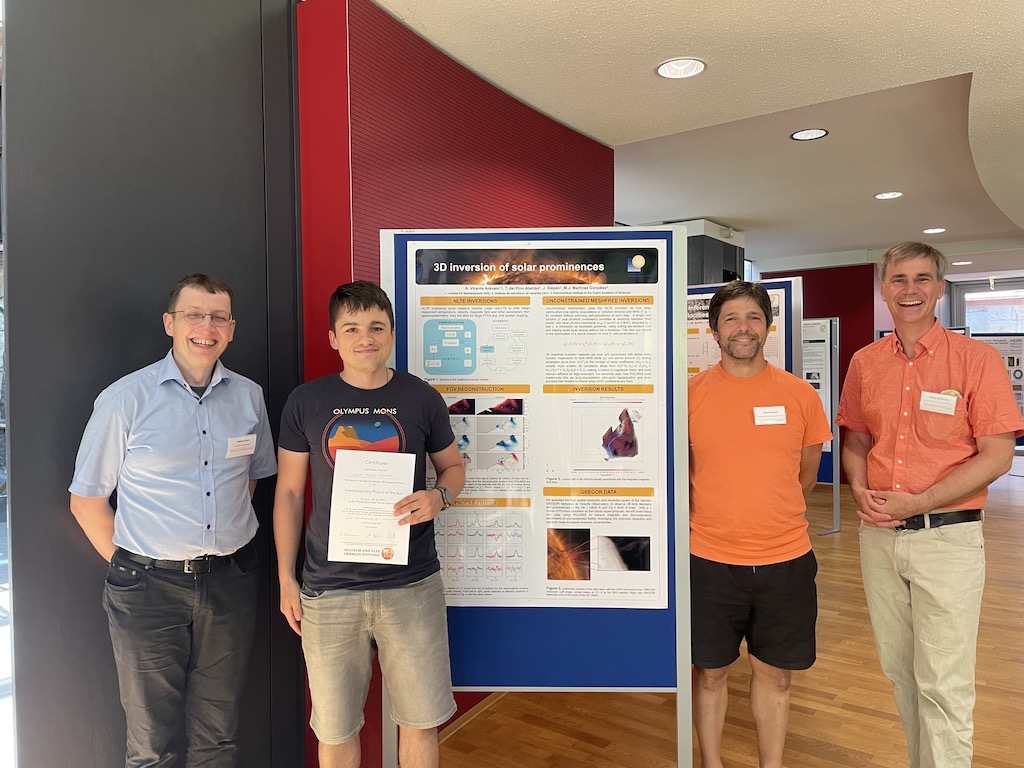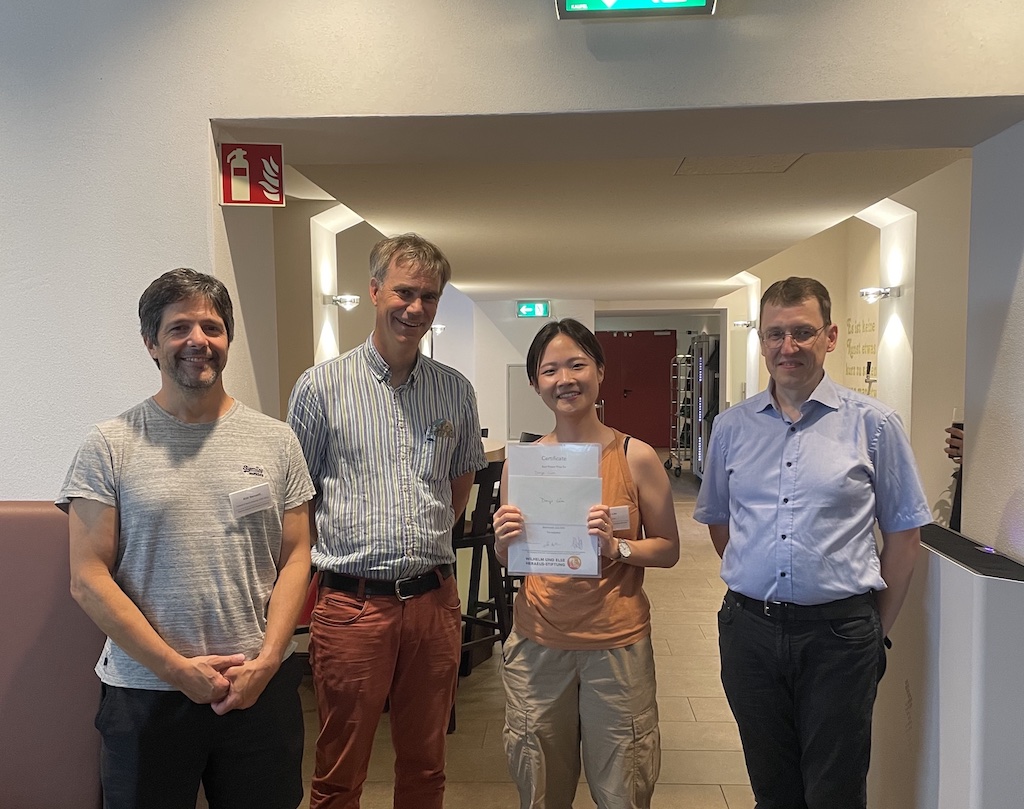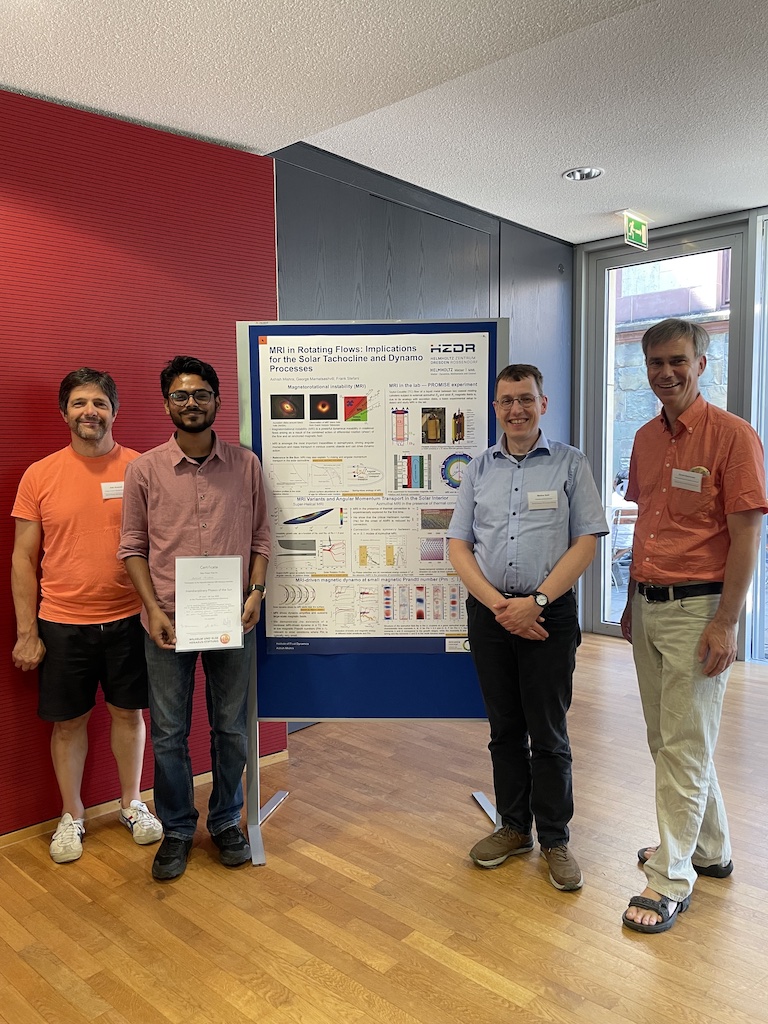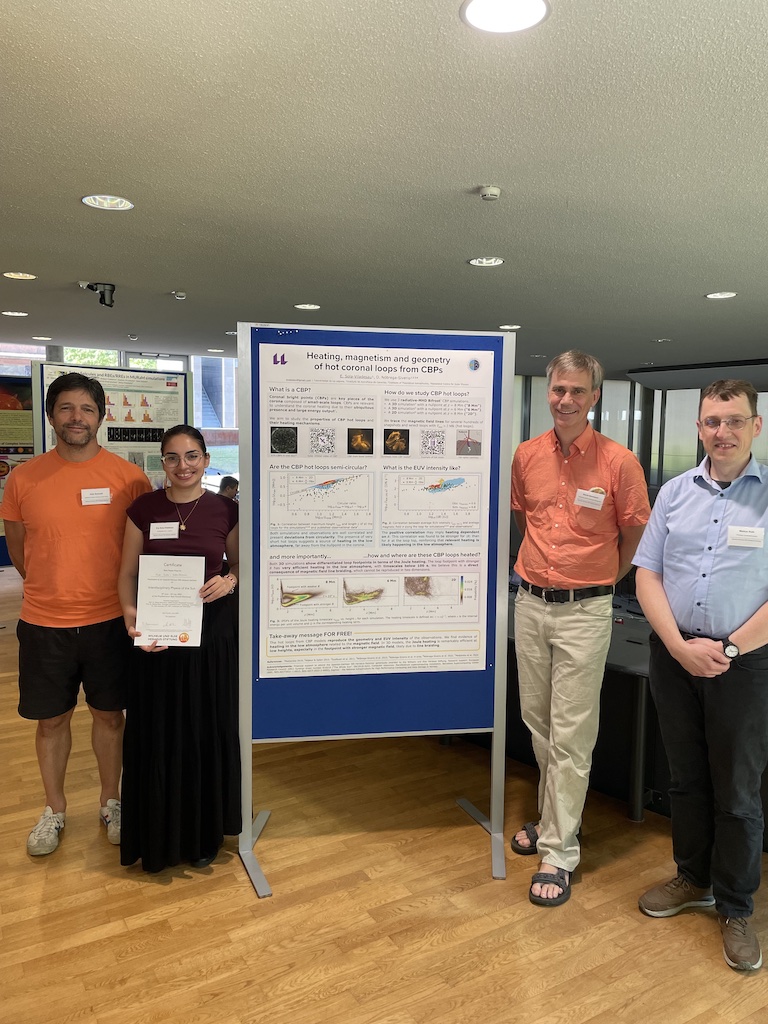Scientists took an interdisciplinary look at our Sun during a Spanish-German research seminar. Markus Roth, director of the Thuringian State Observatory was one of the scientific co-organizer of the conference.
"Interdisciplinary Physics of the Sun" – that was the focus of a conference taking place at the Physikzentrum Bad Honnef, Germany, from June 29 to July 4, 2025. It was jointly organized by Markus Roth, Daniel Bemmerer of the Helmholtz-Zentrum Dresden-Rossendorf, and Aldo Serenelli of the Institute of Space Sciences in Cerdanyola del Valles, Spain. The Wilhelm und Else Heraeus-Stiftung financed the conference.
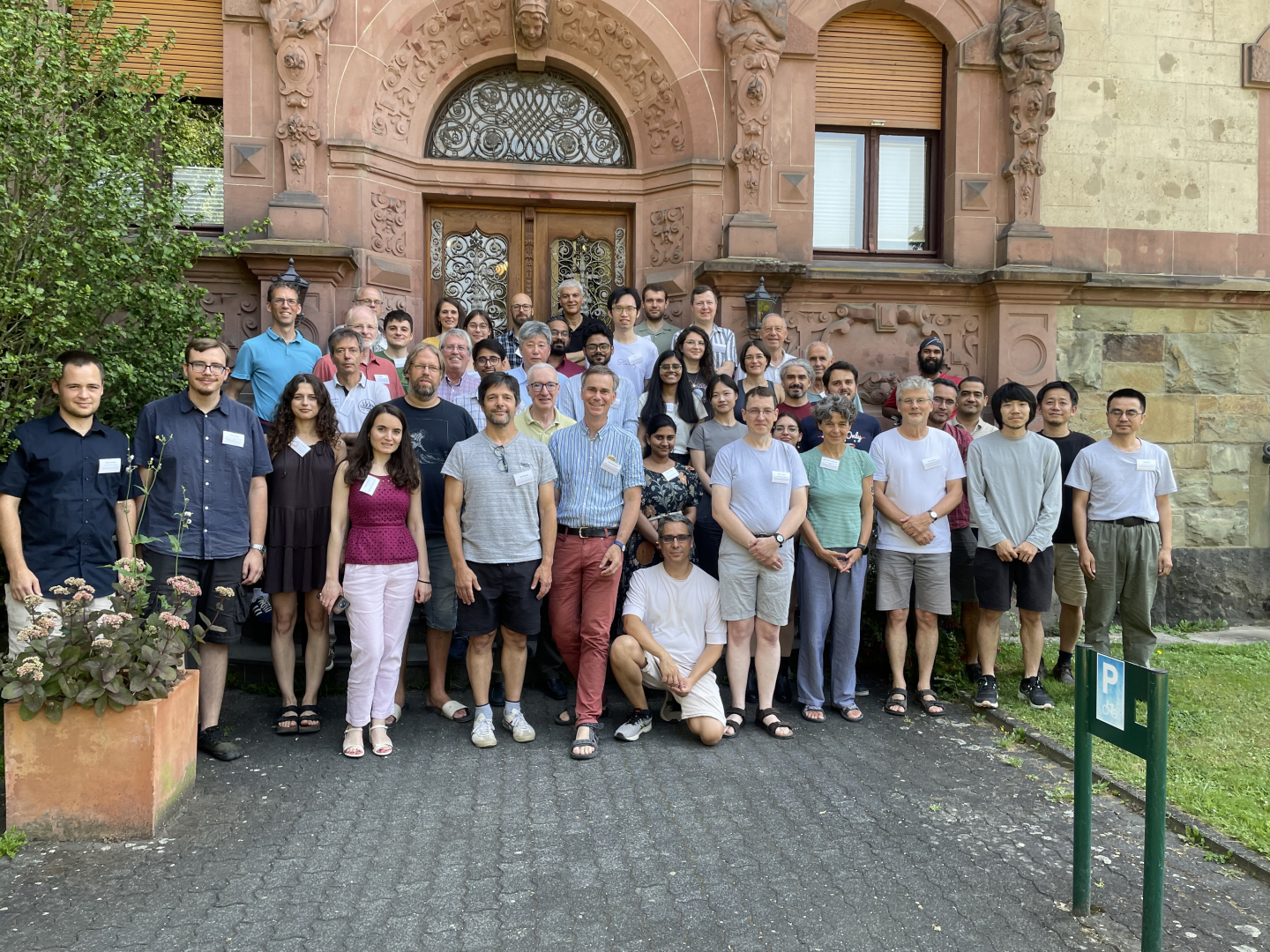 Since several decades, close scientific ties exist between Spanish and German astronomers. At the Observatorio del Teide on the Canary Island of Tenerife, for example, solar physicists from both countries use the Vacuum Tower Telescope and GREGOR, both solar telescopes, to study processes on our star.
Since several decades, close scientific ties exist between Spanish and German astronomers. At the Observatorio del Teide on the Canary Island of Tenerife, for example, solar physicists from both countries use the Vacuum Tower Telescope and GREGOR, both solar telescopes, to study processes on our star.
Modeling magnetic eruptions in the corona
At the conference, the Spanish-German research team that uses the solar telescopes on the Canary Islands reported on new observations and modeling of magnetic eruptions in the corona, which can now be studied with a resolution in the 100 km range and provide insights into space weather.
Although the planned European Solar Telescope (EST) and the new telescope network “Solar Physics Research Integrated Network Group” (SPRING) are not yet in place, new instrumental and analytical work, particularly from German institutes, are already helping to understand the physics behind solar activity. Research that traced the total radiation of our sun back over thousands of years using historical records and isotope data is very closely related to current problems.
Improved data on neutrino fluxes expected
The cross sections for the fusion reactions of the proton-proton chains and the CNO cycle (named after the elements carbon, nitrogen, and oxygen, which act as “catalysts”) that were reevaluated as part of the “Solar Fusion III Review” were compared with the latest solar model. Although there is currently no dedicated solar neutrino detector, there is justified hope that the neutrino experiments SNO+ (successor to the Sudbury Neutrino Observatory), JUNO (Jiangmen Underground Neutrino Observatory) and probably also the liquid xenon detectors will provide improved data on solar neutrino fluxes in the coming years as a kind of by-product. In the US, two laboratories are working to remeasure the opacities of elements relevant to the Sun.
A total of 56 participants from Germany and partner country Spain, as well as Algeria, Belgium, China, Great Britain, Italy, Japan, the Netherlands, South Korea, and the US, discussed recent advances and new research questions relating to the Sun. Topics ranged from particle physics and magnetohydrodynamics to the effects on the Earth's climate. During the conference, research results and posters by young researchers received awards.
One of the insights gained from the workshop was that the interdisciplinary exchange was particularly fruitful because it brought together two traditionally separate research disciplines, namely nuclear physics and astrophysics. This is evident, for example, in questions about element abundances, for which new evaluations of Fraunhofer absorption lines were presented. These are closely linked to the modeling of material transport and its development in the Sun and, via nuclear reactions, also to neutrinos from the sun's interior. There is great hope that the contacts made during the conference will spark new directions in research in the future.
|
Andres Vicente Arevalo (second from left) from the Institut für Sonnenphysik (KIS) was awarded a price for his poster "3D inversion of solar prominences". Next to him are the scientific organizers of the confercence: Markus Roth (left), Aldo Serenelli und Daniel Bemmerer. |
Daye Lim (second from right) from the KU Leuven won a poster price for "Quasi-Periodic Pulsations in EUV Brightenings". The source of all the pictures is the conference website. |
|
Ashish Mishra's poster also received a price. He works at the Helmholtz-Zentrum Dresden-Rossendorf. The topic was "MRI in Rotating Flows". |
Eva Sola-Viladesau from the Universidad de La Laguna, Spain, got a poster price for "Heating, magnetism and geometry of hot coronal loops from CBPs". |


